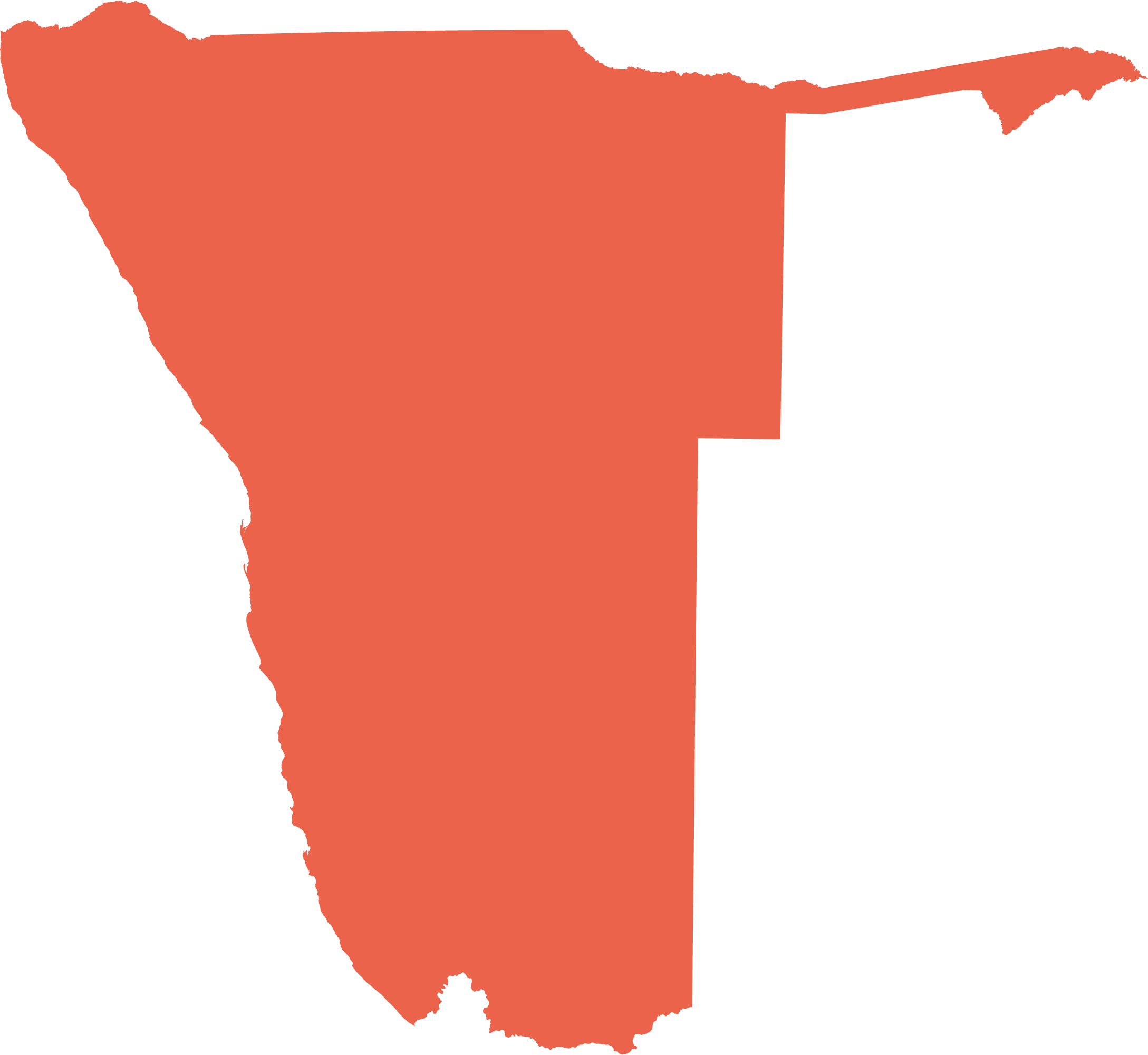Skip to main content
Key points
- People have lived in Namibia for several hundred thousand years at least. Archaeological sites have been found mostly on the central ridge of rocky highlands, probably because people were attracted by its relative abundance of springs. The same is true for rock art, of which more than 80,000 individual images are known. There is also evidence that people moved to the coastal and eastern plains to hunt and gather food when, and where, water was available. Namibians were mobile then and, still today, continue to migrate in pursuit of resources.
- Land uses changed in many areas when crop and livestock farming was introduced to Namibia, probably when Bantu and Khoekhoe communities first migrated to Namibia around 800 CE, perhaps even earlier. More recent immigrations include those from South Africa between the eighteenth and twentieth centuries, from Germany after 1908 and from Angola during the twentieth century.
- More than 500 ships have been wrecked along the coast over the past 600 years, many having fallen victim to the Benguela Current’s heavy seas and thick fog, and strong winds from the South Atlantic Anticyclone.
- Namibia’s population is steadily transforming from one that was largely rural to one that is mainly urban. About 10 per cent of Namibians lived in towns in 1936. By 2021 that proportion was projected to reach 53 per cent; and by 2041 urban populations are expected to be double those in rural areas (67 per cent urban, 33 per cent rural). Most of the rural–urban migration has been by working-age people.
- Towns have grown rapidly, at about 4 per cent per year on average, and rural populations have decreased in size. The growth of informal shack housing has been substantial, such that shacks will be the predominant form of housing in Namibia by 2025 if current trends continue.
- Rural population densities are highest in the eight northern regions, especially across the Cuvelai, along roads in Zambezi Region, and near roads and the Okavango River in Kavango East and Kavango West.
- As a result of migration, Namibia’s many home languages are now widely spoken across the country. Five languages were each spoken in 10 per cent or more of Namibian households in 2011: Oshikwanyama, Oshindonga, Khoekhoegowab, Afrikaans and Otjiherero.
- In the past 100 years (1921–2021), the number of people in Namibia grew 11-fold. Annual population growth was 3.0–3.5 per cent until 1991. It subsequently decreased to about 2 per cent in association with rising levels of education and women having fewer children, and the impacts of HIV/AIDS.
- Households have become smaller from an overall average size of 5.2 people per household in 1991 to 3.9 people in 2016.
- Between 1991 and 2001 life expectancies declined from about 60 to 50 years due to the prevalence of HIV/ AIDS. This trend reversed after 2001, with people now again expected to live for about 60 years on average. Life expectancies are higher in urban than rural areas, and higher for women than for men.
- Rates of HIV infections and related deaths rose rapidly in the 1990s to a peak in 2003, and then declined. In 2017 about 8 per cent of people younger than 65 years were living with HIV/AIDS.
- The malnourishment of children under 5 years of age decreased between 2006/07 and 2013. Infant and under-five mortality rates also decreased significantly between 1991 and 2013. Proportions of underweight children and under-five mortality rates were higher in rural than in urban areas.
- School enrolment rates of children aged 6–18 years varied between 81.4 in 1991 and 82.7 per cent in 2011. The lowest school attendance rates were in Kunene and Omaheke. Nationally, higher proportions of girls were at school than boys. The proportion of boys and girls who left school prematurely has increased over the years. Older Namibians generally have low levels of education because many of them did not go to school or left school at an early age.

